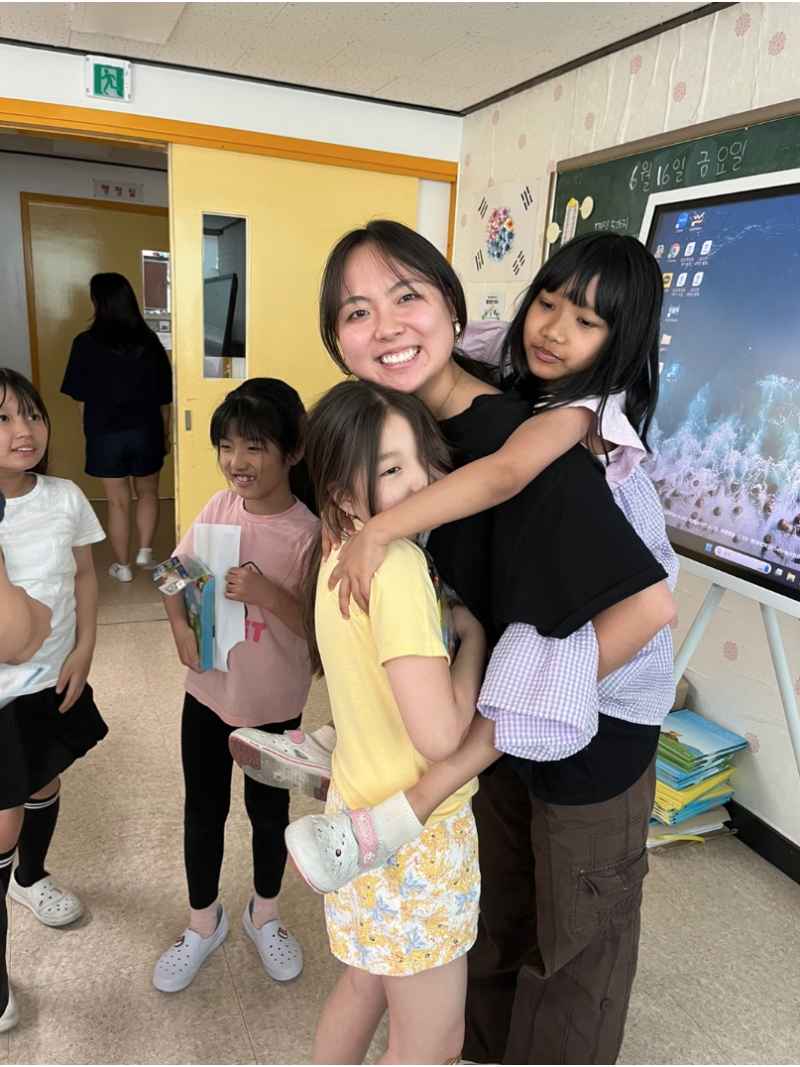This weekend, we visited the Seoul Museum of History. After shaking off the rain droplets from our umbrellas, we entered the spacious lobby. With only a few hours left until closing, only a few visitors ambled in the exhibits. The first thing we saw was a pop-up exhibition on the Korean War. Since we came to learn about the Korean War, we headed over and began exploring. The first panel opened with a blown-up photo of a white American extending a hand to impoverished Koreans, and the rest of the small exhibition followed a similar theme of highlighting the importance of American heroes in the Korean War. After a few minutes of looking around at clippings from LIFE magazine, USMC uniforms, and text boasting the overwhelming contributions of the US, we headed upstairs to the permanent exhibitions.
We spent most of our time in the exhibits on the Japanese colonial period and the latter half of the 20th century. After looking at artifacts from Gyeongseong and passing a small wall that briefly discussed the war with a focus on American assistance, we reached a life-sized model of a Seoul apartment unit in the 70s. Devoid of any wax figures, I easily imagined my grandparents and mother living here. If they hadn’t left Korea in the 60s, they may have lived in an apartment like this. As I scanned the empty rooms, they were filled with images of what could have been – my mother studying in the bedroom, my grandmother sewing clothes in the living room, and my grandfather flipping through the newspaper in the kitchen. Though I’m obviously glad my grandparents moved to America, since it resulted in my mom meeting my dad and eventually having me, I sometimes wonder what their life might have been like had they stayed in South Korea.
I’ve asked them before whether they’ve ever regretted the decision to leave South Korea, and they always reaffirm that they were glad they came to America. My grandparents don’t have the best memories of Korea. They grew up in Pyeongan-do during Japanese colonial rule, and left family members behind to make the difficult journey to the South, seeking peace only to walk directly into war. When they talk about their childhood and young adulthood, the same stories of suffering during colonial rule and wartime repeat. Without fail, each story of the past ends with the same strong sentiment: communism is horrible, and America is the best country in the world. Throughout my life, I’ve had a very limited view of the Korean War. Since my knowledge of the war came from people who lived directly through it, I never questioned it. The thought never occurred to me that even their direct experiences could have been affected by censorship.
In our final minutes at the museum, we revisited that first small exhibition on the Korean War. Other than the wall in the permanent exhibition, this was the only other part of the museum that directly discussed the Korean War. As the first exhibition visible to those entering the museum, this exhibition highlighting the positive role of America during the war paints a very deliberate picture of Korean history that may be visitors’ first glimpse into South Korea’s complicated past. Our visit to the museum reminded me that while more information about the war and America’s less than favorable role in it is now technically available to the public, systems like museums and the media continue to perpetuate views of the past.
– Sydney Maynor


